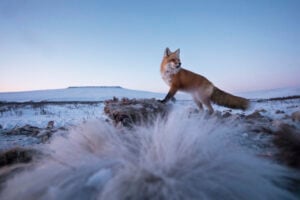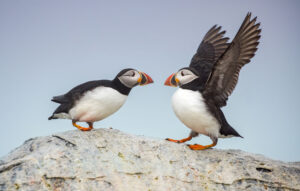Zipping past the window on a bright summer’s day, the tiny blur of magenta and green only comes into focus when it stops to sample the nectar from your garden’s flowers. They may be quick, but it did take hummingbirds 22 million years to diversify into the 338 species known today. And they’re not about to stop. Douglas Altshuler, a University of British Columbia zoologist who co-authored a recent study on the tiny birds, explains how they continue to diversify and flourish throughout the Americas.
What allowed hummingbirds to diversify so rapidly?
Ecological opportunities. Hummingbirds have extraordinary movement ability, and are able to easily colonize and thrive in new habitat. Once they arrived in the New World, various geological and climate changes opened up new habitat for them. One example is the uplift of the Andes mountains; hummingbirds were already present as the range began rising, and they were able to take quick advantage of the area.
What other factors come into play?
Hummingbirds have this interesting way of acting much like insects, which rapidly co-evolved with flowering plants. As the flowers diversified in these different habitats, it created opportunities for the hummingbirds, which can be seen in the relationship between bill shape and flower shape. But they have some advantages over insects; it’s generally easier for them to be at higher elevations, they can thermoregulate better and they can fly great distances.
Is anything changing the rate of hummingbird diversification?
As a habitat gets filled, it’s hard to break in. There are fewer opportunities for evolution than there were a long time ago, which ultimately causes a slowing of speciation.
Is climate change or environmental destruction a major concern for hummingbirds?
In respect to their physiology, we actually think that hummingbirds might be relatively resistant to global climate change in terms of temperature. Where we do think that there could be real problems is habitat loss, which is just tremendous worldwide. The activities of humans are vastly shaping the landscape. Are we just going to keep destroying habitat or are we going to figure out a way to still maintain large natural spaces for speciation to occur?
How is hummingbird diversification different in Canada?
All the hummingbirds in Canada are in a group called the Bees, and their presence here is fairly recent. There almost certainly were hummingbirds here 20 to 30 million years ago, though no fossil records have been found, and Canada could quite possibly be the route by which they made it from the Old World to the New World, crossing the Bering land bridge in Alaska then moving through British Columbia. One of the species in British Columbia is the Anna’s hummingbird, the northern range limit of which was, until very recently, down in the United States. Yet now we have year-round populations of them in British Columbia.




